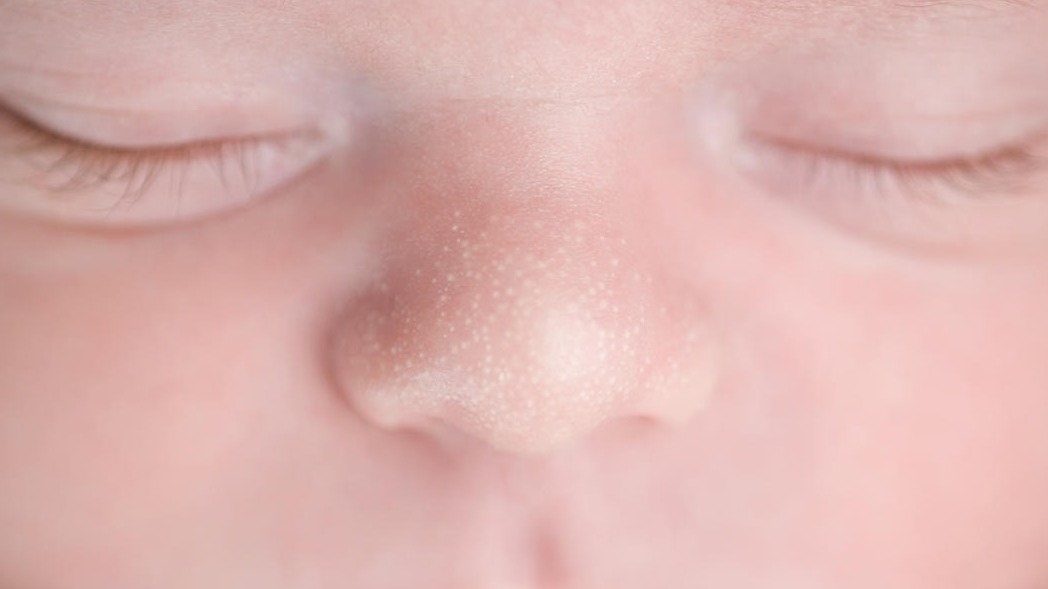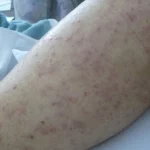What are milia?
Milia are common and harmless tiny pearly white bumps that appear just under the surface of your skin. They are usually smaller than 1mm but can sometimes be bigger than 3mm.

There are a few types of milia:
Neonatal (newborn) milia: Almost half of all newborn babies have these. There may be a few or they may develop as a cluster. They are mostly found on a newborn’s face, especially on their nose. They can also appear on a newborn’s scalp, mouth (Epstein pearls), palate (Bohn nodules) or chest.
Primary milia in children and adults: These can develop around eyelids, cheeks, forehead and genitalia. In young children a row of milia may appear along the nose.
Secondary milia: These are milia that develop after there has been damage to your skin.
What are the symptoms of milia?
Classic signs of milia are small white spots. They are not itchy, painful or contagious. They usually disappear within a few weeks or months.
In newborns they are especially found on their nose. They can also develop on their scalp, upper body, mouth (known as ‘Epstein pearls’), palate (known as ‘Bohn nodules’) or elsewhere.
Among children and adults, they usually appear on the face as clusters on cheeks, eyelids or the forehead. They can also develop on your genitalia.
What causes milia?
Neonatal and primary milia usually develop when keratin (a type of protein) gets trapped in small harmless cysts just below the skin’s surface.
Secondary milia develop after there has been a trauma (injury) to the skin. Causes include:
- medicines — steroid ointments, medicines that suppress your immune system
- trauma — burns, radiotherapy, skin grafts
- illness — various skin conditions such as herpes zoster, bullous pemphigoid, contact dermatitis (eczema) or bullous lupus erythematosus (BLE)
When should I see my doctor?
There is no urgent need to see a doctor if you or your child have milia.
If your newborn has neonatal milia and you notice a coloured rash or crusting around the milia, it is best to seek advice from your doctor or child health nurse.
To find a maternal, child and family health service near you, use the Pregnancy Birth and Baby Service Finder tool.
How is milia diagnosed?
Your doctor can diagnose milia by examining your skin. Milia are usually easy to identify. On rare occasions, your doctor will refer you for a skin biopsy if they are unsure of the cause of a cyst.
Milia treatment How is milia treated?
Treatment of milia depends on the type.
Neonatal milia usually go away on their own within a few weeks or months after birth. They don’t usually need any treatment.
Primary milia in children and adults and secondary milia can be more persistent. If they are bothering you, your doctor may treat your milia with one of the following treatment options:
- burn them off using heat or electricity
- freeze the milia
- topical cream
- pierce the milia with a sterile blade and remove the contents of the milia
It’s best not to scratch or burst them to avoid new milia from forming.
Can milia be prevented?
You cannot prevent milia. It may be helpful to wipe your newborn baby’s face every day to try prevent neonatal milia.


